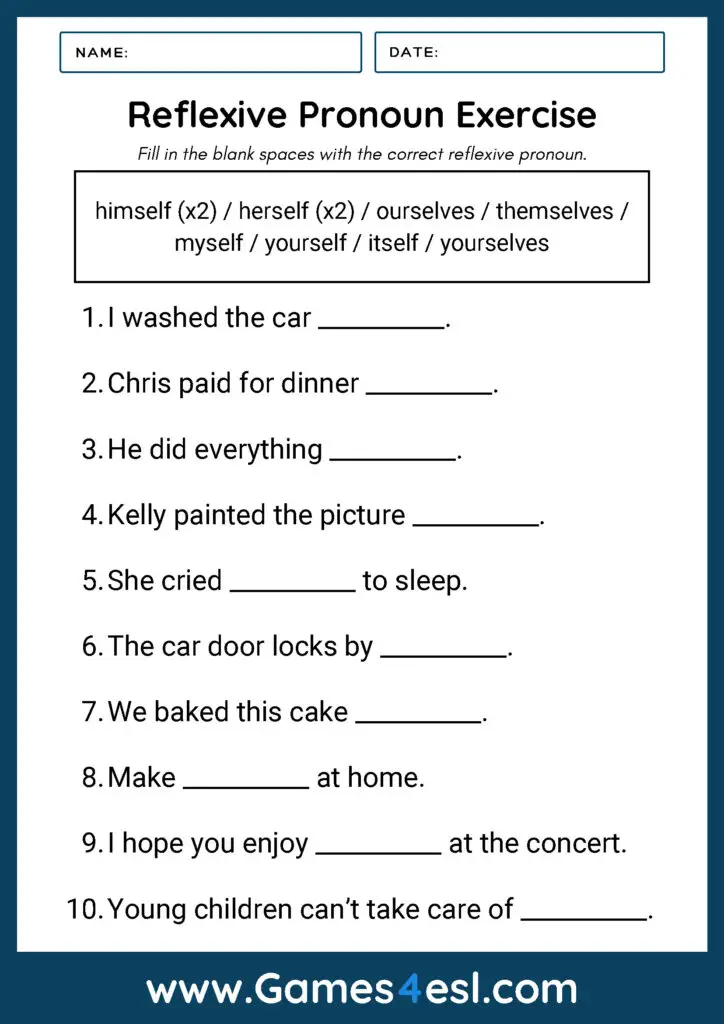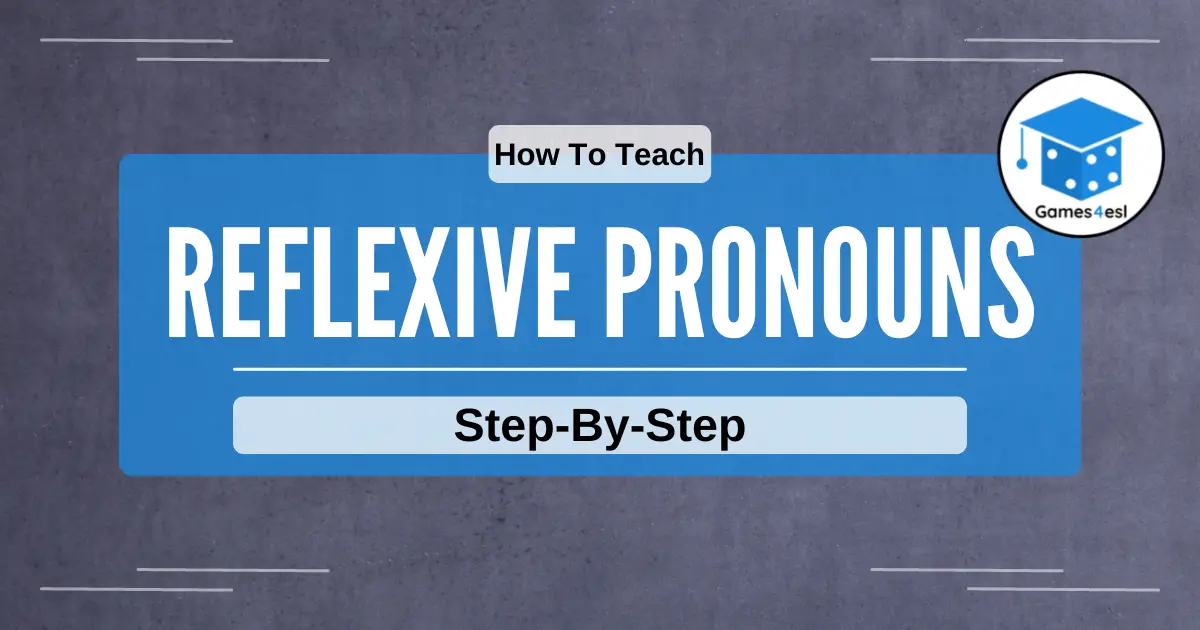How To Teach Reflexive Pronouns | A Step By Step Guide
If the idea of teaching reflexive pronouns seems daunting, don’t worry! We’ve got you covered! Below you’ll find a step-by-step guide on how to teach reflexive pronouns so that your students can understand and use them confidently when speaking English. First, let’s take a look at what precisely reflexive pronouns are.
What Are Reflexive Pronouns?
A reflexive pronoun is a pronoun that refers back to the subject (person or thing) of the verb. Examples of reflexive pronouns are words like himself, herself, myself, itself, yourself, yourselves, ourselves, and themselves.
Reflexive pronouns are used when the subject and object of a sentence are the same. For example, “I hurt myself when I was playing soccer yesterday.“. They are also used when you want to emphasize the subject. For example, “We made this cake ourselves.“.
Reflexive Pronoun Example Sentences
To help you understand how reflexive pronouns are used, here are some example sentences:
- I washed the car myself.
- Chris paid for dinner himself.
- He did everything himself.
- Kelly painted the picture herself.
- She cried herself to sleep.
- The car door locks by itself.
- We baked this cake ourselves.
- Make yourself at home.
- I hope you enjoy yourselves at the concert.
- Young children can’t take care of themselves.
How To Teach Reflexive Pronouns
Now you know what reflexive pronouns are, let’s look at how to teach them, step-by-step.
Step 1: Introduce Reflexive Pronouns In Context
When teaching new concepts or grammar to students, its always best to explain them in context. A great way to do this when teaching reflexive pronouns is to give each student a piece of paper and challenge them to draw something (a dog, an airplane, etc). Give them 5 minutes or so to draw their picture and at the same time, draw a picture yourself.
Once you and all the students have finished, hold up your drawing and say, “I drew it myself.” Write this on the board and underline the word ‘myself‘. Next, tell students to turn to their partner and hold up their drawings and say “I drew it myself.“
Next, walk around the class and point at individual student’s drawings and ask, “Who drew this picture?” and elicit the response, “I drew it myself.“
Once you have practiced this enough, explain to students that ‘myself‘ is a reflexive pronoun and that these words are the focus of today’s lesson.
Step 2: Explain What Reflexive Pronouns Are
Now that students have been introduced to reflexive pronouns, it’s time to explain in more detail what they are. Using the sentence, “I drew it myself.” that you wrote on the board earlier, explain that the words ‘I‘ and ‘myself‘ are referring to the same person.
Next, explain that when the subject in a sentence (i.e., the person/thing doing the action) and the object in a sentence (i.e., the target of the action / the person/thing receiving the action) are the same, then we use reflexive pronouns.
Step 3: Practice With Many Examples
Next, it’s time to give students lots of examples of reflexive pronouns being used. A great way to do this is to choose one of the male students and have them hold up their drawing. Then say, “Chris drew it himself.” and have the class repeat after you. Then, have a female student hold up their drawing and say, “Kelly drew it herself.“
Next, hold up your drawing and have all students hold up theirs and say, “We drew them ourselves.“. Then, have half the class hold up their drawings and have the other half say “They drew them themselves.“
Step 4: Do A Reflexive Pronoun Exercise
By this stage, students should have a good idea about the different reflexive pronouns and how they are used. It will, however, take a lot of practice for students to use these words accurately and confidently. This is where practice exercises can be particularly useful.
There are many ways to create such exercises, but the simplest way is to provide students with 10 or so example sentences with the reflexive pronoun missing and have them fill in the blank with the correct word. For low-level students, you might consider putting students in pairs or small groups to complete this task.
Here is an example of a reflexive pronoun exercise you can download, print, and use in your class:

Step 5: Do A Reflexive Pronoun Activity
To wrap your lesson on reflexive pronouns be sure to play a fun activity to help reinforce what students have learned. A great activity to play is one in which you ask students to plan an event. This could be a surprise party for someone, a school dance, a talent competition, etc.
Once you have chosen the event, brainstorm with students about 5 to 10 tasks that need to be completed to prepare for the event. Next, put students in small groups and tell them they must decide who in the class will do each of the tasks. They must then write this down using the reflexive pronouns that they have learned. For example, “The teacher will blow up the balloons himself.“, “Kelly will bake the cake herself.“, “We will decorate the room ourselves.“, etc.
Related Resources
Thanks for reading. I hope you found this guide useful. Before you go, here are some related resources you might also like:
How To Teach Possessive Pronouns
Pronoun Quiz
Personal Pronoun Worksheets


